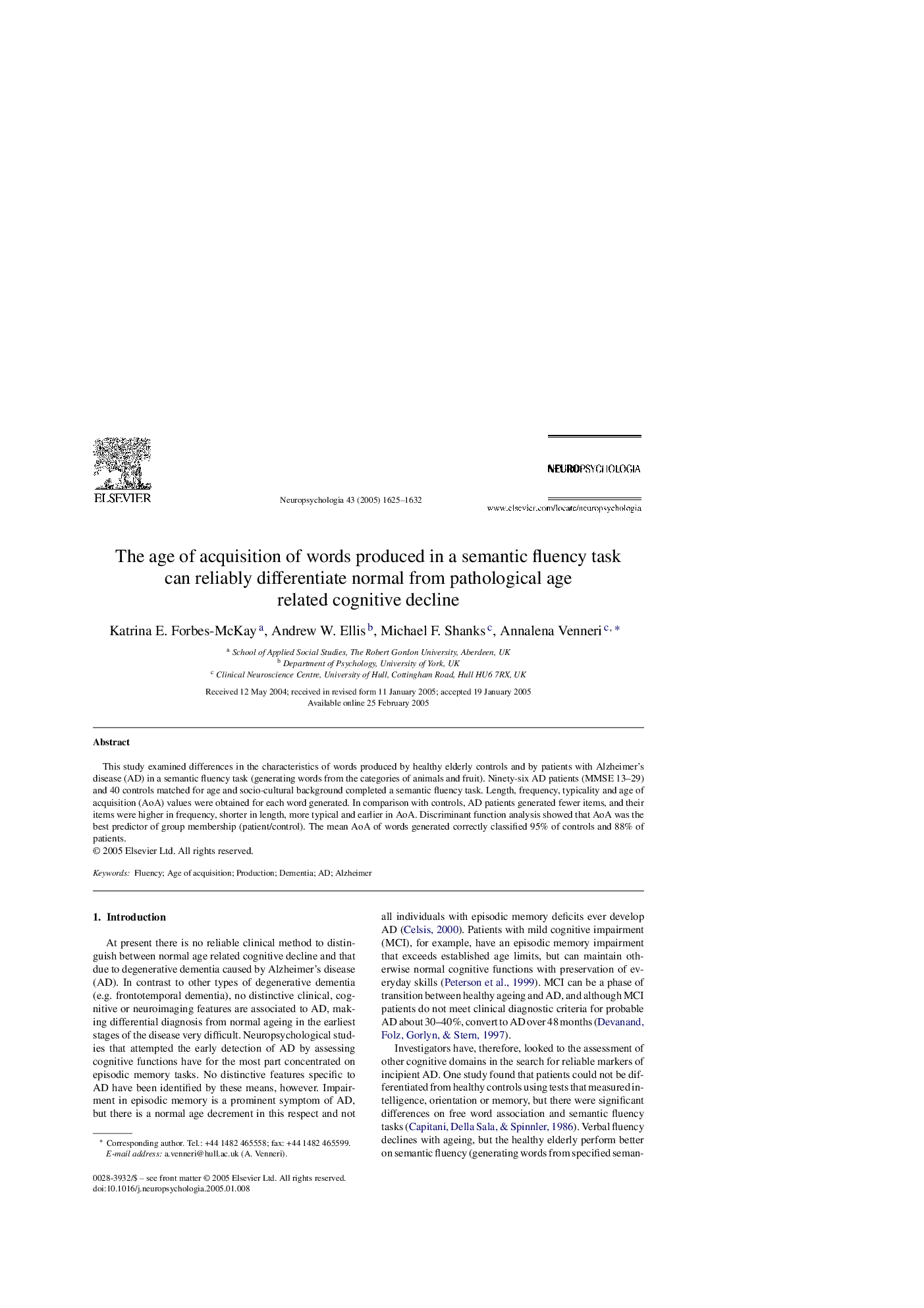| Article ID | Journal | Published Year | Pages | File Type |
|---|---|---|---|---|
| 10467522 | Neuropsychologia | 2005 | 8 Pages |
Abstract
This study examined differences in the characteristics of words produced by healthy elderly controls and by patients with Alzheimer's disease (AD) in a semantic fluency task (generating words from the categories of animals and fruit). Ninety-six AD patients (MMSE 13-29) and 40 controls matched for age and socio-cultural background completed a semantic fluency task. Length, frequency, typicality and age of acquisition (AoA) values were obtained for each word generated. In comparison with controls, AD patients generated fewer items, and their items were higher in frequency, shorter in length, more typical and earlier in AoA. Discriminant function analysis showed that AoA was the best predictor of group membership (patient/control). The mean AoA of words generated correctly classified 95% of controls and 88% of patients.
Related Topics
Life Sciences
Neuroscience
Behavioral Neuroscience
Authors
Katrina E. Forbes-McKay, Andrew W. Ellis, Michael F. Shanks, Annalena Venneri,
